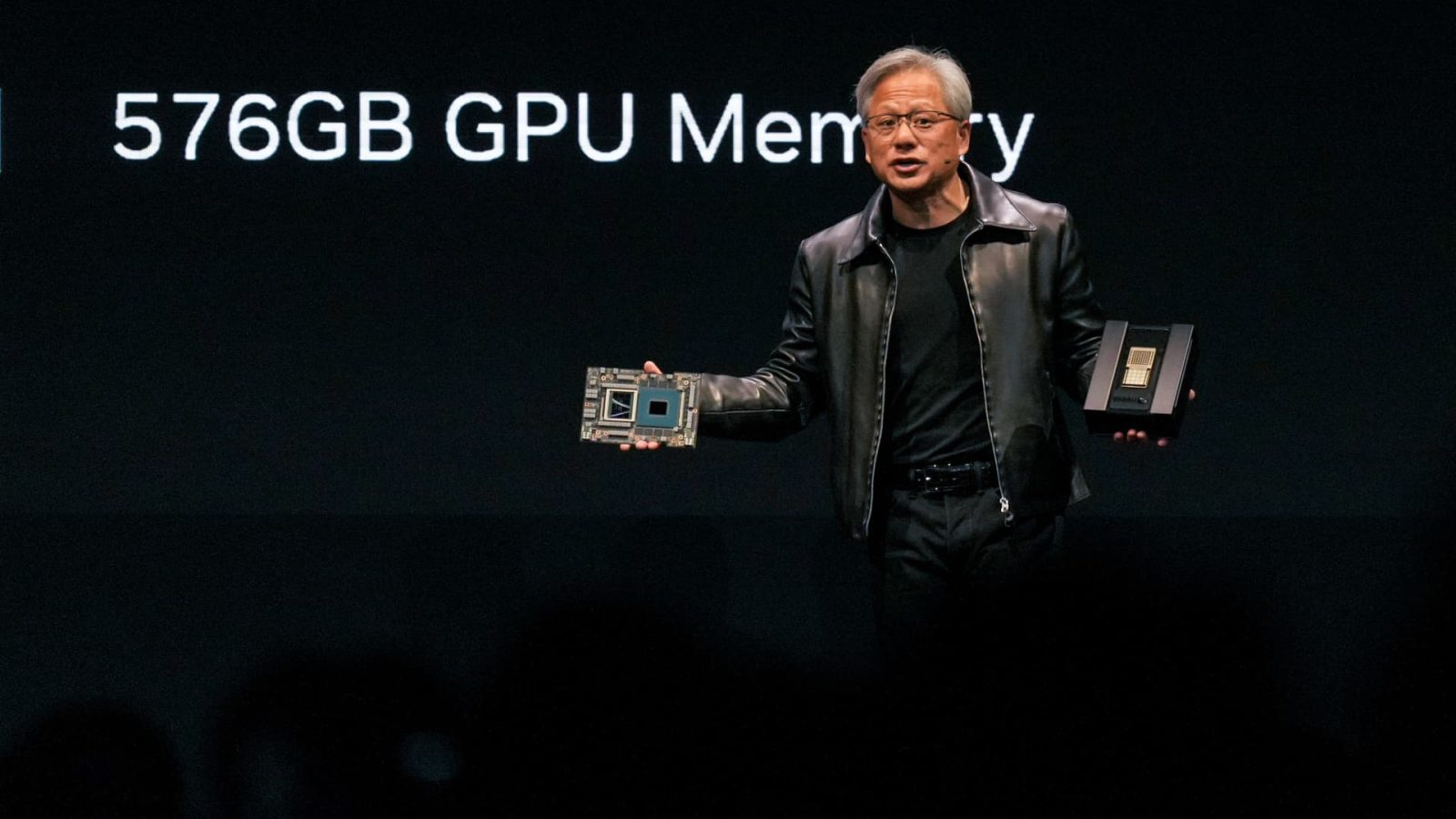Nvidia (NVDA) and Oracle (ORCL) were the subject of Wall Street research on Monday: One note suggests a new chip created by Tesla may hurt the former, while another says why a potential earnings beat by the latter might not be something to brag about. We disagree with both takes. Nvidia NVDA YTD mountain Nvidia’s year-to-date performance. The news: Shares of Nvidia are down Monday, bucking a positive move by the broader market. One possible cause: A note by analysts at Morgan Stanley on Monday that claims Tesla (TSLA) can save money by creating its own AI chip for autonomous driving instead of using Nvidia’s product. Club take: We understand Morgan Stanley’s argument — creating a specialized chip could be a less-expensive option for EV maker. It may also outperform an Nvidia graphics processing unit (GPU) in specific uses. However, sell-off in Nvidia might be a buying opportunity. “It is hurting the stock,” Jim Cramer said about the note. “And I just think: Let it fall and then buy. Let if fall, though.” We don’t believe Tesla’s decision to build its own chip impacts Nvidia in the near term. Tesla needs as many Nvidia chips as it can get, based on CEO Elon Musk recent comments on the company’s quarterly earnings call. “We’re using a lot of Nvidia hardware. We’ll actually take Nvidia hardware as fast as Nvidia will deliver it to us,” Musk said. The company is creating the new chip, called D1, because it can’t get Nvidia to make quickly enough. Tesla isn’t the first to work on custom AI chips focused specifically on the company’s bread and butter. Alphabet (GOOGL), for example, has worked with Broadcom (AVGO) for years on its own custom TPUs (tensor processing units). However, despite years of custom chip production — it recently introduced its TPUv5e — Alphabet’s Google still works closely with Nvidia on AI innovation . The company actually announced the coming general availability of “A3 VMs, based on NVIDIA H100 GPUs, delivered as a GPU Supercomputer” in the same blog publication in which it introduced the TPU v5e. In fact, in a interview with the magazine Wired published Monday , Alphabet CEO Sundar Pichai stated, “Look, the semiconductor industry is a very dynamic, cooperative industry. It’s an industry that needs deep, long-term R & D and investments. I feel comfortable about our relationship with Nvidia, and that we are going to be working closely with them 10 years from now.” And that’s coming from the head of one of the most cutting-edge AI companies on the planet. Here are three more reasons why investors should buy Nvidia on the dip: Tesla’s chip is for a very specific case: for computer vision systems used in Tesla vehicles. Nvidia chips can be utilized by clients for many applications, making it easier for them to accelerate growth. In industry parlance, Nvidia has higher utilization rates. Nvidia has a large installed base. Companies that have been working on the company’s GPUs and related software for the past several years will find it difficult to migrate to another provider. Switching costs are too high. Nvidia chips are found throughout every aspect of modern computing. You can’t really operate without them. Oracle ORCL YTD mountain Oracle’s year-to-date stock performance. The news: Citigroup analysts expect Oracle to top Wall Street’s sales and earnings estimates later Monday when it reports its fiscal 2024 first-quarter results. Oracle Cloud Infrastructure – the company’s cloud-computing division – will be the primary reason for exceeding expectations. “At the same time, we would argue this upside is lower quality as it has lower margins and is more commoditized infrastructure services that are benefiting from supply constraints and more discounted pricing,” Citi argued in its note to clients. Club take: Our investment in Oracle is predicated, in large part, on the growth of its cloud-computing unit. So in our minds an earnings beat primarily due to strength in that business would be “high quality.” Oracle deserves to be considered a leader in the generative AI among cloud-computing peers in the space, Jim has argued. Despite being smaller than the likes of Amazon Web Services, Azure and Google Cloud, Oracle has levered a partnership with Nvidia to help improve the competitiveness of its cloud-computing offering. Indeed, Oracle is “benefiting from outsized allocations of Nvidia GPUs relative to its size,” UBS analysts wrote in a late August note to clients, adding that those AI chips are likely to be supply constrained for another 6-to-12 months. That’s exactly what Musk was referring to in his remarks on the July conference call. The fresh Nvidia-Tesla conversation adds another layer to Oracle’s report Monday, when viewed through the lens of Nvidia’s AI leadership. Tesla and hyperscalers themselves have the means to develop customer silicon for certain use cases, but these are not your average companies. Our view is that companies – whether that’s mature companies or startups – want access to Nvidia’s best-in-class hardware, and increasingly realize that Oracle Cloud Infrastructure, or OCI, is a place they can find it. For example, in June, Oracle said a number of AI startups recently signed contracts worth more than $2 billion to use Oracle’s second-generation cloud platform. We expect to see impressive growth at OCI in Monday’s results, and in quarters down the road, based on what’s known today. In essence, Oracle’s results along with higher-level comments from management regarding the demand they are seeing for OCI will also be helpful in assessing demand for Nvidia’s technology ecosystem more broadly. For most companies, it simply isn’t financially feasible or sensible to build out an application-specific supercomputer to handle their AI needs, but they all have — or will one day have — some use case for AI. For that reason, data centers designed to support diverse customers must be general purpose and built to accelerate a multitude of tasks across industries. Given that Oracle doesn’t have its own custom chips, we think management is well-positioned to speak on how Nvidia is key to making OCI relevant to the needs of its wide-ranging customers. (Jim Cramer’s Charitable Trust is long NVDA, ORCL, MSFT, AMZN, AVGO and GOOGL. See here for a full list of the stocks.) As a subscriber to the CNBC Investing Club with Jim Cramer, you will receive a trade alert before Jim makes a trade. Jim waits 45 minutes after sending a trade alert before buying or selling a stock in his charitable trust’s portfolio. If Jim has talked about a stock on CNBC TV, he waits 72 hours after issuing the trade alert before executing the trade. THE ABOVE INVESTING CLUB INFORMATION IS SUBJECT TO OUR TERMS AND CONDITIONS AND PRIVACY POLICY , TOGETHER WITH OUR DISCLAIMER . NO FIDUCIARY OBLIGATION OR DUTY EXISTS, OR IS CREATED, BY VIRTUE OF YOUR RECEIPT OF ANY INFORMATION PROVIDED IN CONNECTION WITH THE INVESTING CLUB. NO SPECIFIC OUTCOME OR PROFIT IS GUARANTEED.
Nvidia (NVDA) and Oracle (ORCL) were the subject of Wall Street research on Monday: One note suggests a new chip created by Tesla may hurt the former, while another says why a potential earnings beat by the latter might not be something to brag about.
We disagree with both takes.
Read the full article here









Leave a Reply